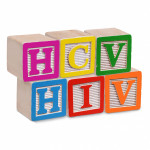Antiretrovirals (ARVs) have added decades to the life spans of people living with HIV who have access to treatment. Nevertheless, when compared with HIV-negative people, those taking treatment for the virus still have a higher risk of various health problems typically associated with aging. The reasons behind these increased health risks still aren’t very well understood, but the scientific community is eagerly looking for answers. Researchers are inclined to point the finger at a phenomenon known as chronic inflammation as a main culprit.
When you get a cut or infection, your immune system jump-starts a cascading process that sends to the site a diverse army of cells that promote healing and infection control and give rise to inflammation. Included in this complex, interconnected battalion are CD4 and CD8 cells (known as “helper” and “killer” T-cells), antibodies, clotting factors and pro-inflammatory cytokines, among many others.
Normally, certain cells will turn off this healthy inflammatory process when the healing or infection-fighting process is complete. But sometimes, inflammation persists over the long term and can become counterproductive, causing damage to healthy cells and tissues. In HIV-negative people, chronic inflammation is tied to a host of diseases, including cardiovascular, autoimmune, liver and kidney diseases and cancer.
HIV itself appears to give rise to chronic inflammation. The virus also leads to dysregulation of the immune system, which can further fuel inflammation. Many scientists believe that HIV-related chronic inflammation contributes to HIV-positive individuals’ increased risk of cardiovascular disease, neurocognitive disease, osteoporosis (bone loss), liver disease, kidney disease, frailty and some non-AIDS-defining cancers. These are all conditions associated with getting older. People with HIV tend to get them at younger ages than their HIV-negative counterparts.
Within weeks of infection, HIV begins a massive assault on the gut, which has a high concentration of CD4 cells. Even very early treatment of the virus may not totally reverse this damage, which appears to cause chronic inflammation by allowing harmful microbes to seep into the body (in a process called microbial translocation), thus spurring more immune activation and chronic inflammation.
While HIV treatment does help fight the immune dysfunction and chronic inflammation caused by the virus, ARVs don’t necessarily wipe out these effects. For one thing, having an undetectable viral load doesn’t mean the virus is totally silent. Low-level viral replication may still persist—and at a high enough level to prompt a constant state of alert from the immune system, a chronic inflammatory state. Consequently, over-activated immune cells may be driven to a state of exhaustion, similar to what is seen in older people. HIV may also disrupt the cells that turn inflammation on or off, possibly compromising the body’s ability to properly regulate inflammation.
People with HIV tend to have higher rates of other viral infections, such as hepatitis B or C viruses (HBV, HCV) and cytomegalovirus (CMV, which is in the herpes family), which may also contribute to chronic inflammation and immune activation.
Additionally, HIV may cause scarring in both the thymus and the lymph nodes, leading to interference in the body’s ability to fight infections. The thymus is an organ in the chest that is responsible for manufacturing T-cells, while the lymph nodes are responsible for coordinating immune responses to infections.
The numerous serious health problems to which chronic inflammation could give rise may sound alarming. But Steven Deeks, MD, a professor of medicine at the University of California, San Francisco (UCSF), who is an expert in HIV-related chronic inflammation, says, “It’s important to emphasize that the effect that we’re talking about is not dramatic.” Such an effect, he says, “will likely not have much of an impact on people’s quality of life—their overall health, really—until people are in their sixth, seventh decades of life, at which point in time it could very well be much more apparent.”
Research into treatments for chronic inflammation:
“I think the jury is still out whether the best approach is to target the inflammatory response or rather to target the root drivers of the inflammatory response: HIV itself, coinfections, microbial translocation,” says Peter Hunt, MD, an associate professor of medicine at UCSF who also studies HIV-related chronic inflammation. “One of the problems is that we don’t really have successful interventions to block those root causes; we don’t have any interventions that turn off HIV expression.”
Several research studies have suggested that the cholesterol-lowering medications known as statins may lower chronic inflammation among people with HIV and protect them against its harmful effects. But results from a study that provides gold-standard scientific evidence of such benefits from statins are still lacking. Researchers are currently enrolling a planned 6,500 participants into such a trial, called REPRIEVE. The study includes people with HIV who are taking ARVs and who wouldn’t normally be in a position to take a statin; they will be randomized to either receive a statin or a placebo. The study will hopefully answer whether statins’ anti-inflammatory effects will translate into a lowered risk of disease, such as heart attack or cancer, among people with HIV. Unfortunately, results aren’t expected until 2021.
Other on-the-market medications currently under investigation as anti-inflammatory agents for people with HIV include Micardis (telmisartan), a blood-pressure medication, and the diabetes medication Vildagliptin (galvus). Research has already shown that aspirin does not apparently help HIV-related inflammation.
Scientists are also investigating to see whether probiotics, which promote desirable bacteria in the digestive system, may affect the body’s so-called microbiome in a way that helps lower gut-related inflammation.
Seeking to directly affect inflammatory pathways, researchers are looking at drugs used for inflammatory diseases, like the autoimmune disease rheumatoid arthritis, and are even looking at some cancer treatments. Other research is examining drugs that inhibit major indicators of inflammation, called biomarkers, such as the cytokines interleuken-1 or -6 (IL-1, IL-6).
Experts generally agree that a cure for HIV, if it is ever developed, remains decades away (contrary to recent erroneous news reports). In the meantime, as researchers strive to develop ways to shrink the size of the viral reservoir and, in turn, likely reduce low-level viral replication, they may wind up with treatments that, even if they don’t cure someone, end up dampening chronic inflammation.
Things you can do to fight chronic inflammation and its potentially harmful effects:
According to Deeks, the long-term damage caused by HIV-related chronic inflammation may be easier to prevent when people are younger, as opposed to reversing the damage once people are elderly.
Ways to prevent such damage include:
- Early treatment. Research has shown that starting ARVs as soon after infection as possible reduces the likelihood of health problems linked to inflammation, such as heart attack and certain cancers.
- Take your ARVs every single day. Recent research found that anything less than 100 percent adherence was tied to higher inflammation.
- Don’t smoke. Smoking is especially harmful among people living with HIV (not to mention highly common) and can exacerbate inflammation in the arteries.
- Eat a healthy diet. Research has shown that the so-called Mediterranean diet reduces the risk of heart attack or stroke.
- Get moving. Regular exercise reduces your risk of numerous health problems.
- Shed body fat. Fat tissue may be a source of inflammation.
- Treat coinfections. Hep C is now curable through as little as eight weeks of treatment, and hep B is treatable. Both infections can cause severe damage to the liver; even well-treated HIV can accelerate such damage.







18 Comments
18 Comments